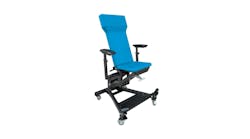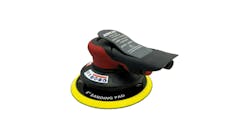Content brought to you by ABRN. To subscribe, click here.
What you will learn:
• Billing your paint products by invoice will allow you to overcome paint increases.
• Too many variable exist in pearls and metallic colors to create an accurate estimate using materials multipliers
• Products used to create paint colors should be itemized to receive accurate reimbursement
I believe the paint materials multiplier was created back when basic black was the only color option. Paint colors are now well beyond basic black, but materials are still multiplied based on estimated paint hours like they were for single-stage colors. While there has been a multiplier added for clear and three-stage colors, the process has not kept up with the changes we have seen in color composition.
The Ford color I have been talking about is paint code A, Raven Black. It is nothing special, just a basic black that has been around since paint codes were invented, hence the “A” designation. Using the materials calculator for a ten-hour job with a reimbursement rate of $36.00, you would receive $360.00 in materials allowance. Over the years, that basic black color has evolved into Absolute Black Pearl and Agate Black Metallic, all while the materials multiplier has stayed the same. This poses a big problem for collision centers, because as colors have become more complex, they are still being reimbursed for that basic black.
With the additions of pearls and metallics to make colors more vibrant, the cost of creating these colors increases significantly. That $360.00 calculated for the basic black is no longer sufficient to cover the costs of the additional materials used to replicate the newer colors. Estimating database providers have modified their programs in an attempt to keep pace with the changes, but there are too many variables in the colors to create more than an estimate. This has left the collision centers short-changed when a materials multiplier is used.
Paint colors will continue to evolve and costs to replicate them will incrementally increase as the colors become more and more complex. With those complex colors using a variety of toners and additives, the only way a collision center can get proper reimbursement for materials is to itemize the products used in creating the paint mix. As paint is mixed on a computer-based mixing system, each component consumed is recorded by quantity and cost. The key is everything that is consumed during the refinish process must be mixed using the computerized mixing system to calculate the true cost.
Once the paint mixing process is complete, you can review the items on the usage inventory and create an invoice showing the cost of replicating the color. While it is not necessary to print an invoice for every repair, I do encourage you to review your costs for each repair. Most often, any time only one part is painted (especially bumpers), there are several blend panels, or when there are multiple stages in the refinish process the material expense will exceed that allowed by the materials multiplier. Your paint invoice can be presented to your customer just like you would a parts invoice to process the correct reimbursement. Using the invoice, you can add a line to your damage appraisal showing the cost of the additional paint materials to satisfy the documentation requirements of third-party payers.
I hope you can see that billing for paint materials is no different than billing for a hood or fender. Just as a part increase goes unnoticed since it is billed by invoice, billing your paint products by invoice will allow you to overcome paint increases as well. I encourage you to work with your paint supplier to set up the invoicing process in your paint-mixing computer and begin billing your materials today. Invoicing will help you track material consumption and stabilize your paint material profitability while building sustainability into your business.




